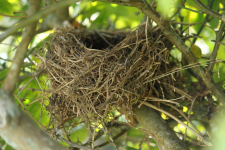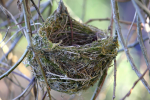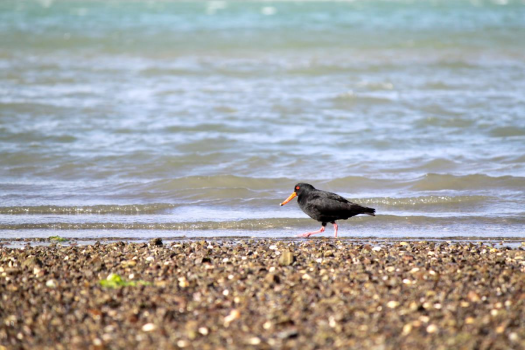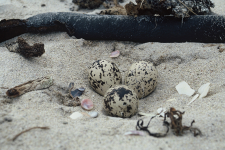Whose nest is this?
0
Overview
Using this Resource
Connecting to the Curriculum
Marking Student Responses
Working with Students
Further Resources
I am learning to look very carefully and notice what is important when answering a science question.
I will know I can do this when:
• I notice things about birds and where they live.
• I can give reasons for my ideas about which nest belongs to each bird.
Task administration:
The trial students worked independently. At Level 2, though, some students were reluctant to write their explanations. You may get more valid data about how students use evidence if they can give their explanations orally. You could
- show the resource on an interactive whiteboard and work with the whole class. This provides the opportunity for students to defend their ideas, and critique others' use of evidence. It also can facilitate students to notice more things, and build up their vocabulary.
- work in small groups, with one person writing the agreed explanation. Each group could then compare their responses. This provides opportunities to negotiate the best answer, both within the group and more widely.
Copyright:
Images copyright to PhotoKete are used under a commercial license and can be freely used for educational purposes.

Image source: Dreamstime





Department of Conservation: Crown Copyright


Image: Cath Gilmour, Department of Conservation, Crown Copyright. Licence: CC-BY-02
Image source: New Zealand Birds Online (Oyster catcher nest) www.nzbirdsonline.org.nz
Levels:
1, 2
Curriculum info:
Keywords:
Description of task:
Task: Match birds and nests, and explain why the choice was made. Assessment focus: using environmental cues to make inferences.
Curriculum Links:
Science capabilities
The capabilities focus is brought about by the conversations you have and the questions you ask.
Capability: Gather and interpret data
This resource provides opportunities to discuss how careful observations lead to inferences in science.
Science capability: Gather and interpret data
Capability: Use evidence
This resource provides opportunities to discuss the validity of the evidence used to support an explanation.
Science capability: Use evidence
The capabilities focus is brought about by the conversations you have and the questions you ask.
Capability: Gather and interpret data
This resource provides opportunities to discuss how careful observations lead to inferences in science.
Science capability: Gather and interpret data
Capability: Use evidence
This resource provides opportunities to discuss the validity of the evidence used to support an explanation.
Science capability: Use evidence
Science capabilities:
Answers/responses:
| Answers |
|
Pukeko
  |
|
Explanation
Any explanation that uses environmental cues (e.g., reeds, water), size cues, references to science knowledge, or personal experience
Examples:
Because the bird is in this long grass and the eggs are in the long grass (environmental cue)
Because this bird does not fly and they usually walk around in long grass (science knowledge)
|
|
Fantail
  |
|
Explanation
Any explanation that uses environmental cues (e.g., the branches), size cues, references to science knowledge, or personal experience
Examples:
I think this because it is sitting on a tree with no leaves. (environmental cue)
Because it is small and so is the bird (size cue)
|
|
Oyster catcher
  |
|
Explanation
Any explanation that uses environmental cues (e.g., sea, beach, sand, driftwood), size cues, references to science knowledge, or personal experience
Examples:
The bird is by the sea and the eggs are on sand. (environmental cue)
Because the nest is on the beach and so is the bird (environmental cue)
|
|
Blackbird
  |
|
Explanation
Any explanation that uses environmental cues (e.g., tree, leaves), size cues, references to science knowledge, or personal experience
Examples:
I think this because the bird is sitting on a tree with leaves on it. (environmental cue)
|
Trialled October 2016 with 23 Year 4 students
Teaching and learning:
Trialled with 23 Year 4 students, October 2016
Diagnostic and formative information:
Trial students were generally able to match the birds to the correct nests. Not surprisingly, they were most likely to confuse the fantail and blackbird nests. Both birds have nests in trees so students needed to make more detailed observations.
Fewer students provided a valid explanation for why they had made their choices.
Those that did write an explanation were most likely to use environmental cues.
Because it looks like it is on a beach and there is a nest on the beach
Because a pukeko can’t fly and the nest matches with the bird's environment
I think this because it is sitting on a tree with no leaves.
Some referred to size (for the fantail).
Because it is small and so is the bird
Other cues used less often were science knowledge or personal experiences.
Because pukekos live on the ground
Because I see them round there
For the blackbird, a few used a process of elimination.
Because it was the last nest left
In the case of the fantail, a small number of trial students gave two reasons.
Because the fantail is small so the nest would be small, and the branches are similar
Most students who attempted a writtten explanation used relevant evidence. A few, though, gave a reason that did not provide evidence, or the evidence provided did not discriminate between nests.
Because fantails like to be warm and the nest looks warm
Because it has lots of eggs in it
Because of the background
Next steps:
Capability 1: Gather and interpret data
An important component of this assessment is observation.
Give students opportunities to describe what they see. A good strategy is to share observations, so they build on others' ideas.
- Can they make more than one observation? For example, do they notice things about the bird, the bird's habitat, structure of the nest, etc?
- Are they able to focus on aspects that help them answer the question (do they look for relevant details)?
- Do they have sufficient vocabulary to give a rich and accurate description?
Capability 3: Use evidence
Formulating a science explanation involves using evidence.
A number of students who were reluctant to write their answers were able to give an explanation orally. Give students opportunities to share and discuss their ideas about what constitutes evidence in simple and familiar scenarios.
- Are they able to identify evidence that backs up their idea? Can they provide more than one reason?
- Are they able to identify faulty reasoning?
- Do they use cause and effect language (e.g, because, so, therefore. because of this)?
- Do they suspend judgement if the evidence is not clear (it might be, maybe, it could be, etc.)?

